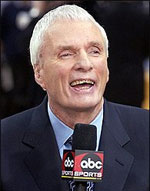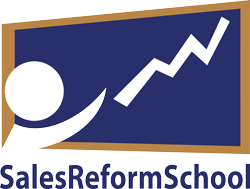When Hubie Brown and I were much younger, he was my favorite basketball coach. I had just moved to Atlanta and adopted the hometown Hawks – his team. He was smart and energetic. In interviews, he seemed like a great guy. Hubie is in the Basketball Hall of Fame as a contributor due to his stellar coaching and ongoing broadcasting career. Although nearly 80 years old, he is still top on top of the game. I find his commentary spot on, educational, and engaging. He makes NBA game broadcasts better.

I’m happy to remember that our paths have crossed in person. Years ago, while waiting for luggage early one summer Sunday morning at the Atlanta Airport baggage carousel, I spotted him. I was returning from a business trip, and of course, could not pass up the chance for a short conversation with my favorite basketball guy. I am 99.999% sure he has no recollection of this brief encounter, and guess it has happened 100s of times before and since. He did not disappoint me. Instead, he made the impression we all hope for. It was the off season, so instead of bouncing around from city to city broadcasting basketball games, he was returning from a Russian basketball camp. We chatted amiably about basketball and travel. Hubie Brown was a true gentleman, gracious and engaging even with a fan for five minutes in a nearly empty airport early in the morning after a long flight.
I love the NBA, and this season has been a blast to follow. Needless to say, Hubie has come across my consciousness more than once in the last few weeks. SInce my day job is helping my clients improve sales and marketing, but my attention is getting drawn to this weekend’s beginning of the NBA playoffs, I thought I’d combine the two memes by channeling my inner Hubie Brown. If you don’t know, Hubie has a sui generis talent for speaking in the second person, and yes, you can make a game of this during his broadcasts.
So here it goes.
You’re a successful CEO with an exit dream, but not necessarily a strategy. One of the biggest daily pressures you face is boosting bottom-line profits by spending most of your time, or more appropriately, your sellers’ time on more high-quality “A” prospects. Or, you are a CEO of a small, but growing, entrepreneurial company that has started making sales but you are worried about how you are going to keep the funnel full. How are you not going to lose track of where the business is going or should be going?
In both cases, you may also be wary of today’s uncertain economy. Privately, as either of these CEOs, you may stay up at night worrying about whether your sales people or sales agents are spending time on the right prospects – whomever those are. In staff meetings, you may ask – or should be asking, “Out of the dozens of different lead-qualification techniques, how do you select the most effective one? (sic, still channeling Hubie). How do you hit the ‘bull’s-eye’, which represents the most profitable, most favorable prospects available? Are you ranking prospects or just going after whoever you can? If you lose a lot of prospects, waste a lot of time, is it because you are shooting at “B” clients? How can you take aim at – and score more – ‘A’ quality clients?”
Most of the time, when I help my clients with figuring out their prospects, it’s one layer down the process; more about understanding the individual buyer personas and architecting the sales conversations sellers should be having. But sometimes, leadership can’t articulate their ideal prospect. At this one layer up (or lay-up, groan, I know!) lies the expertise of T.K. Kieran, President of T.K. KIERAN & ASSOCIATES, Inc.
(T.K. and I had lunch this month at Alon’s Bakery in Dunwoody, GA. I think Hubie would say, “You go there for a nice business lunch, you can go rich with stuffed sandwiches or cross over to nice and healthy with veggies or salads. Either way you can’t go wrong. And you’ll notice it’s a great people watching spot.” But I digress.)
T.K. calls this process identifying and implementing your “Ideal Prospect Criteria™”. As a CEO, you need this Ideal Prospect Criteria™ to overcome some of your biggest head-bangers: keeping your sellers from wasting time on losing prospects and keeping marketing from wasting time, effort and money. To grow revenue more predictably you need to be able to:
1. Eliminate the pursuit of low potential prospects
2. Build a common, effective lead qualification process
3. More consistently pursue “highest potential, highest payoff” prospects
4. Segment a prospect base into A, B, C, and D priorities
So, how do you do that? T.K. shares a few hints:
- Use no less than five, and no more than eight, criteria in your lead qualification process
- Writing each criteria to reflect the behaviors, beliefs or abilities (with respect to buying/purchasing) of past clients who were “ideal”, who you want your future prospect to also possess/demonstrate
- Be prepared to answer your criteria with a binary, “yes” or “no”, without further explanation, otherwise the criteria is too murky.
Strategically, executive leadership looking to grow exponentially or prepare for an exit, must consider constantly where future sales are going to come from. If you are smart, you will figure out your Ideal Prospect Criteria™” and call T.K. She can help.
Oh, and one last thing. You have to have the Heat over the Thunder in six games. As Hubie might say, “You have to respect LeBron James athleticism and the Heat’s attention to detail defending the goal.”
Good Selling and Thanks Hubie.
